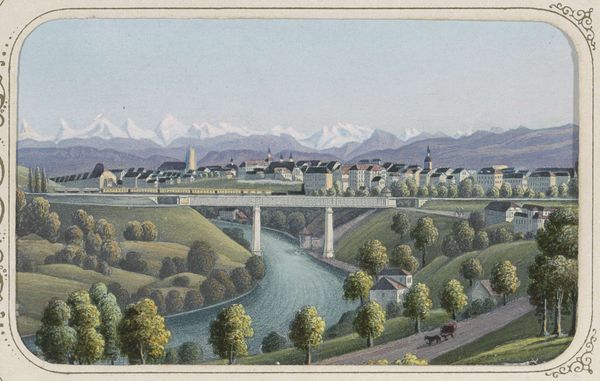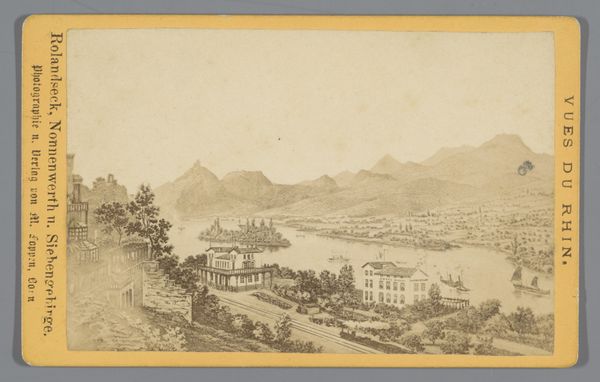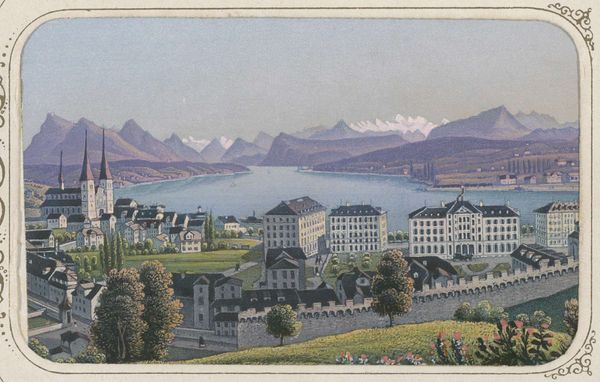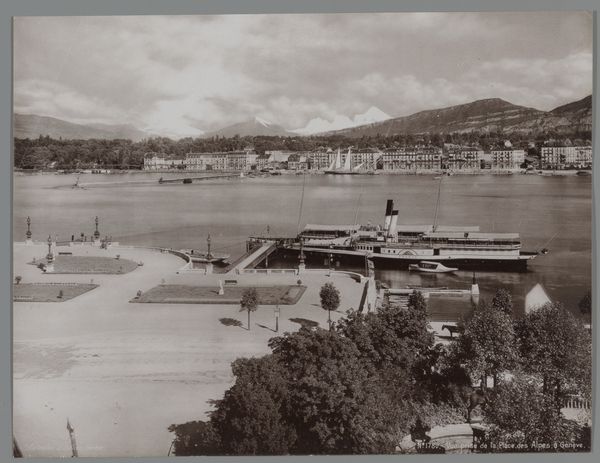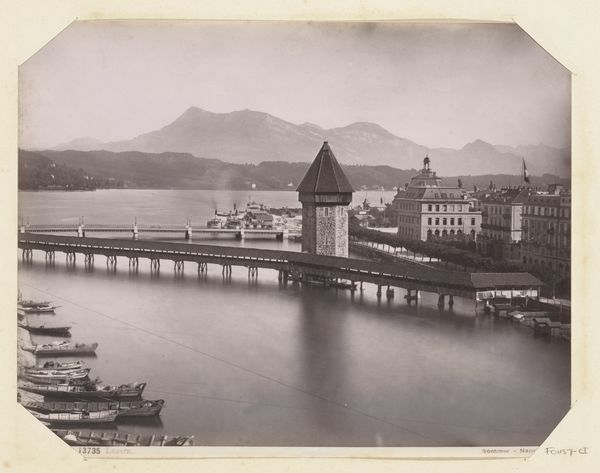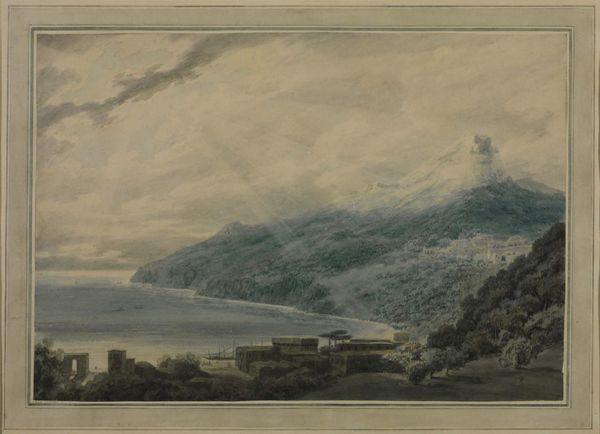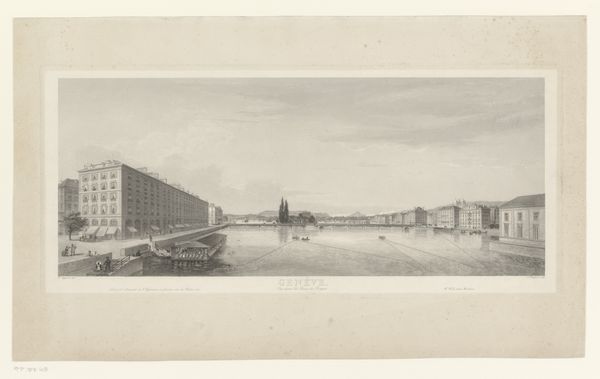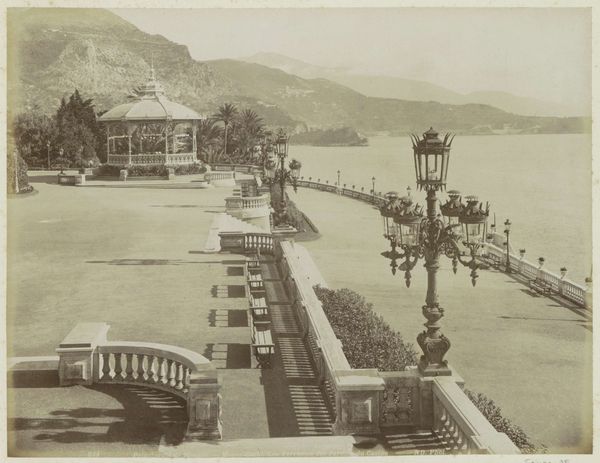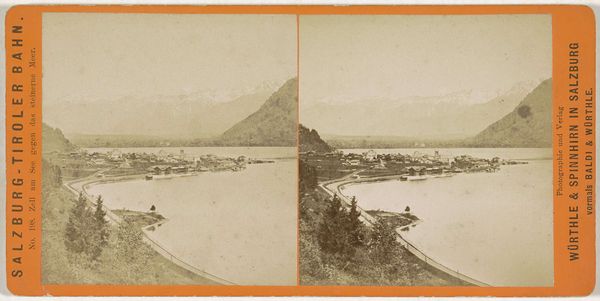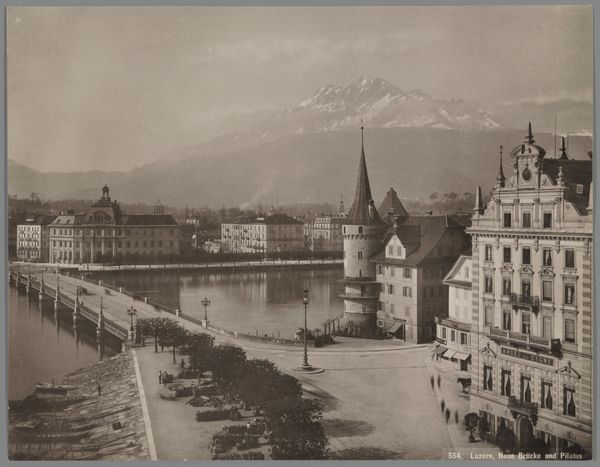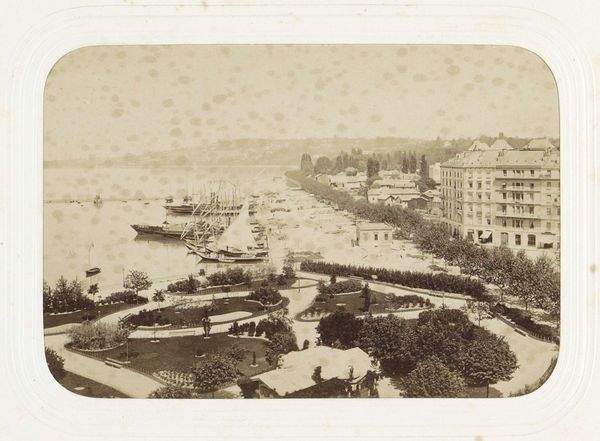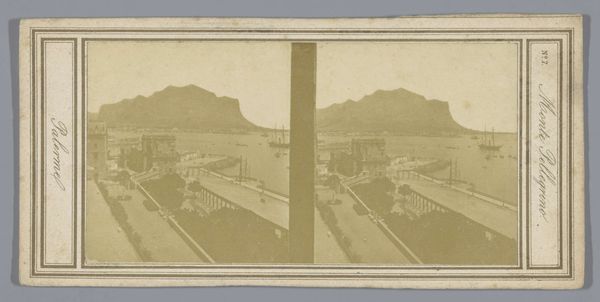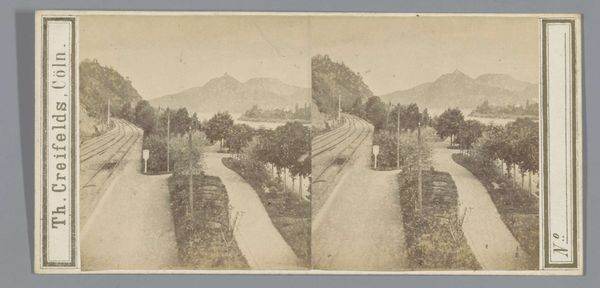
Dimensions: height 53 mm, width 95 mm
Copyright: Rijks Museum: Open Domain
Editor: So, this artwork, "Gezicht op de stad Gen\`eve met op de voorgrond bruggen," by Rudolf Dikenmann, made sometime between 1860 and 1890, it’s a watercolour painting. I’m really struck by how delicate the entire cityscape looks, yet also how ordered and structured everything seems. What's your take on it? Curator: I’m immediately drawn to the production process. Look closely – this is watercolour. Think about the availability of materials and the relative portability of watercolor paints at this time. Artists would capture landscapes swiftly before industrialisation changed it beyond recognition. Did the industrial means of production change art's landscape depiction from realism to impressionism or other style? Editor: That's a fascinating thought! It's almost like the fleeting nature of Impressionism mirrored the rapid changes in society. What does this cityscape tell you about Geneva at this point in time? Curator: Watercolors allowed for the quick and replicable depiction of sites for middle-class consumption. It reveals how urban landscapes were becoming commodities in themselves. We see here the ordered arrangement, which appealed to growing markets keen on documentation. What does it tell you about the consumer of the time, and what did they value? Editor: Perhaps a sense of progress, order and the picturesque...it shows their aspirations! Thanks, that's made me think completely differently about the entire image, seeing it through a lens of consumerism and production rather than just aesthetic beauty. Curator: Exactly! Thinking about the artwork through materials and social use helps us see art history in a new way. It’s not just aesthetics; it is the reality of a moment produced in paint!
Comments
No comments
Be the first to comment and join the conversation on the ultimate creative platform.
